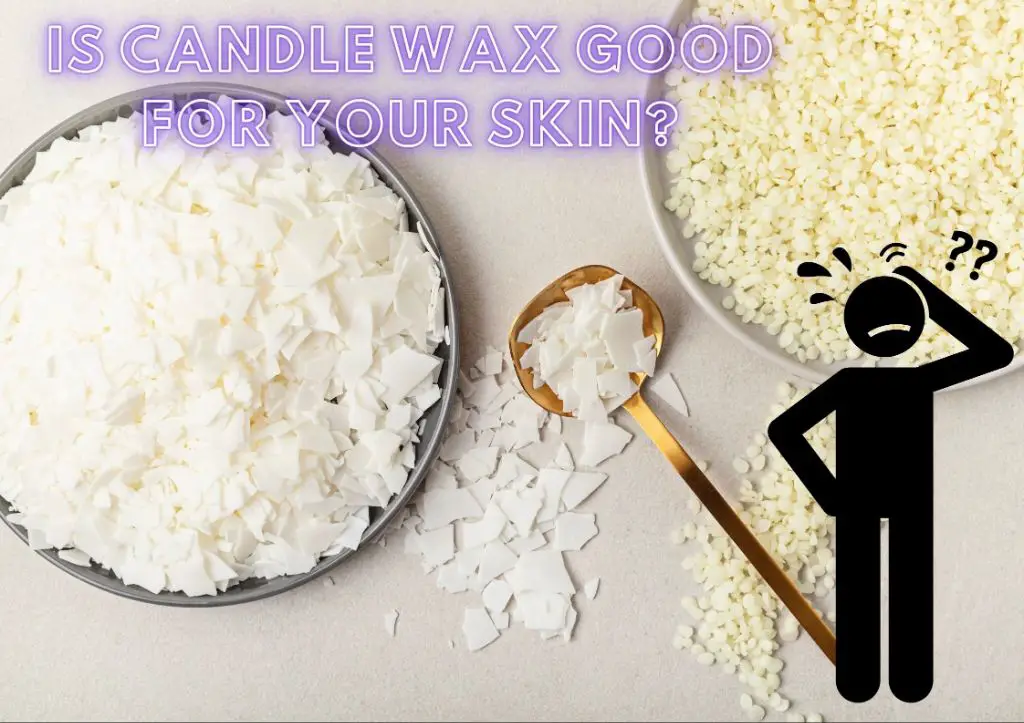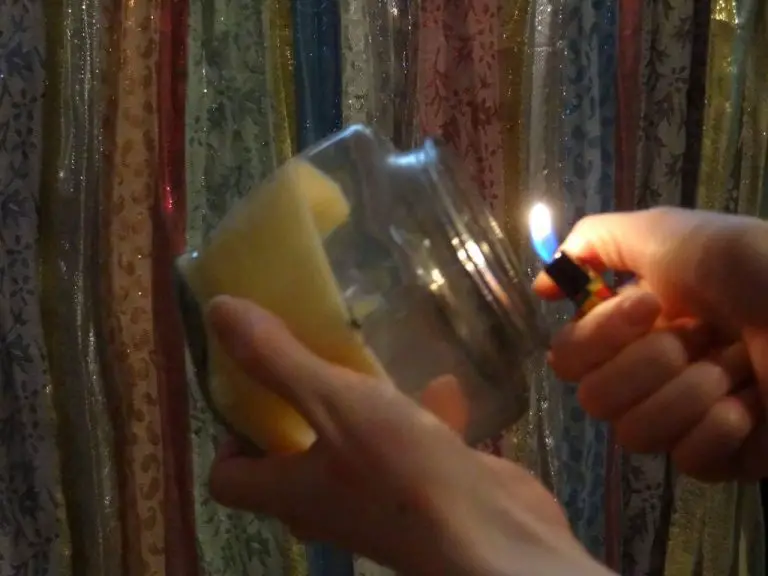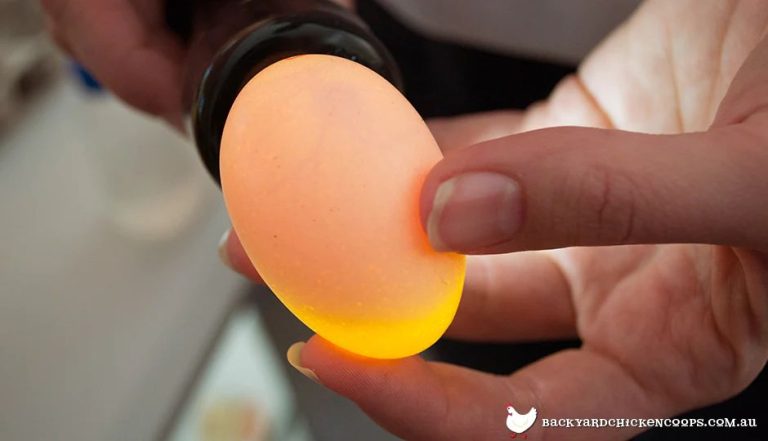Can Candle Wax Be Used As Lotion?
Candle wax refers to the waxes used to make candles. The most common types of candle waxes are paraffin wax, beeswax, soy wax, and palm wax. Candle waxes have specific properties that make them suitable for candle making, like having a low melting point to melt when heated and a high enough melting point to remain solid at room temperature. When melted, candle waxes are liquid oils that can hold a wick and release fragrance as they burn. Once cooled and solidified, the oils turn back into a solid wax that forms the body of the candle. Candle waxes like paraffin and soy wax contain hydrocarbons that provide fuel for the candle flame. Beeswax contains fatty acids, alcohols, and hydrocarbons. The composition of the wax impacts characteristics like burning time, melting point, texture, color, and scent throw.
Moisturizing Qualities
Candle wax like soy, beeswax, or paraffin can provide temporary moisturizing effects by coating the skin with an occlusive layer. However, waxes themselves do not contain hydrating ingredients that increase moisture in the skin. According to this article, candle wax can help seal in existing moisture, but does not actively hydrate the skin. Waxes lack humectant ingredients like glycerin that draw water into the skin. While coating the skin with wax may prolong the effects of an existing moisturizer, the wax itself does not provide true moisturization.
Occlusive Properties
Candle wax, especially soy wax, can act as an occlusive agent to help lock in moisture when applied topically to skin . Occlusives create a protective barrier on the skin’s surface that prevents transepidermal water loss by blocking evaporation from the skin (https://soydelicious.com/blogs/news/using-your-soy-candle-as-a-skin-lotion). The protective film formed by wax helps retain and prolong hydration in the skin, making it an effective moisturizing ingredient. Studies show that occlusives like petroleum jelly and beeswax significantly increase skin hydration and reduce water loss when used regularly . The fact that candle wax forms a similar barrier indicates its potential to hydrate and moisturize skin when applied.
Hydrating Ingredients

While the occlusive properties of candle wax may seem moisturizing at first, candle wax inherently lacks humectant ingredients that draw and bind water to the skin for true hydration. Humectants like glycerin, hyaluronic acid, aloe vera, honey, and plant oils containing fatty acids allow lotions to not only form a protective barrier but also attract and retain moisture in the skin.
Candle wax is largely comprised of hydrocarbons like paraffin and lacks these hydrating compounds. One study showed that soy candle wax provided some hydration due to the natural oils in soy, but not to the level of a properly formulated lotion. Without humectants, moisture is sealed in but not sufficiently attracted and absorbed.
While occlusive properties have benefits, long-term use of plain candle wax could potentially cause dryness, itchiness, and irritation when natural moisture is locked in but unable to be replenished. For proper hydration, experts recommend formulating candle wax lotions with complementary humectant ingredients.
Fragrance
Candle wax can provide pleasant fragrance, but may also irritate skin for some people. Fragrances used in candle wax often contain chemicals that can cause skin irritation or allergic reactions in sensitive individuals (Source). Symptoms may include redness, itching, swelling, and rash. Those with perfume allergies or sensitivity to fragrance ingredients like limonene and linalool may experience reactions from contact with scented candle wax (Source). It’s best to avoid using candle wax with added fragrance directly on the skin. Unscented wax may be less irritating for those concerned about skin sensitivities.
Sanitization
Candle wax is not sanitary and contains contaminants. When burning a candle, the wax melts and releases compounds into the air. Paraffin wax is made from petroleum byproducts and can contain harmful chemicals like toluene and benzene (Source). Breathing these compounds over time can irritate lungs and airways. Beeswax and soy wax candles are cleaner alternatives, but all candle wax collects dust, dirt, and debris from the air as the candle burns (Source). Using contaminated wax directly on skin risks transferring bacteria, viruses, and other microbes. Proper sanitization requires high heat and filtration to remove impurities, which is not possible with homemade candle wax lotions.
Texture

One of the main concerns with using candle wax as a lotion or moisturizer is the thick, viscous texture. Candle wax is quite thick and difficult to spread smoothly on the skin compared to regular moisturizing lotions and creams (Source). The viscosity and consistency is more similar to a grease or thick petroleum jelly. This makes application tricky and can result in uneven spreading and clumping on the skin. The dense, waxy texture also takes longer to absorb into the skin compared to a regular moisturizer.
The thick viscosity of candle wax is ideal for holding together the wick and maintaining shape in candle making. However, this density makes it unsuitable as a skincare product you apply topically. The texture needs to be smooth, light and easy to absorb into the skin. Candle wax is simply too thick and sticky to spread well as a body lotion or moisturizer (Source).
Other Oils/Butters
While candle wax does contain some moisturizing properties, ingredients like shea butter and coconut oil are generally better options for skin moisturization. According to this source, shea butter and coconut oil are commonly recommended for extremely dry skin thanks to their superior moisturizing and hydrating abilities.
Shea butter is an excellent emollient due to its high concentration of fatty acids, which help nourish and hydrate the skin. Coconut oil is also an effective moisturizer as it contains saturated fats that help seal in moisture. Both ingredients are more natural skin care alternatives compared to petroleum-based candle wax.
Overall, while candle wax is not necessarily harmful, shea butter and coconut oil can better provide lasting hydration and address the root causes of dry skin. Unless candle wax has been specially formulated into lotion with additional moisturizing ingredients, shea butter and coconut oil are more optimal choices.
Safety
While some types of candle wax like soy wax contain nutrients that can moisturize skin, directly applying candle wax to skin carries some risks. As the Little Extra blog reports, “Not every wax is safe for the skin, as some contain harmful chemicals, allergens, or additives that can cause skin damage and irritation.”

One major safety concern is that the occlusive properties of wax may clog pores leading to acne breakouts. The thick wax can prevent the skin from naturally purging dirt, oil and dead skin cells that get trapped within pores. As one Reddit user commented, “I wouldn’t recommend putting candle wax directly on your face as it could clog pores and lead to breakouts.”
To avoid potential skin irritation or acne, it’s advisable to melt candle wax and combine it with other moisturizing carrier oils and butters that are non-comedogenic (won’t clog pores). Always patch test any homemade lotions on a small area of skin first.
Conclusion
In summary, while candle wax may seem like an easy DIY moisturizer, it really isn’t recommended for use on skin. The main reasons are:
- Candle wax can trap dirt and bacteria against the skin since it forms an occlusive barrier.
- There are no inherent hydrating or moisturizing ingredients in plain candle wax.
- Candle wax is not formulated for use on skin and may contain undisclosed ingredients or impurities that could cause irritation or allergic reactions.
- Proper sanitization of used candle wax is difficult and it’s unlikely all bacteria would be killed before application.
- The texture of cooled candle wax is dense, thick and generally unpleasant to apply as a body lotion.

Instead, it’s much safer and more effective to use a moisturizer formulated for skin application. Opt for lotions containing oils, butters, ceramides, glycerin or hyaluronic acid for hydration. And be sure to patch test any new products before full use.





